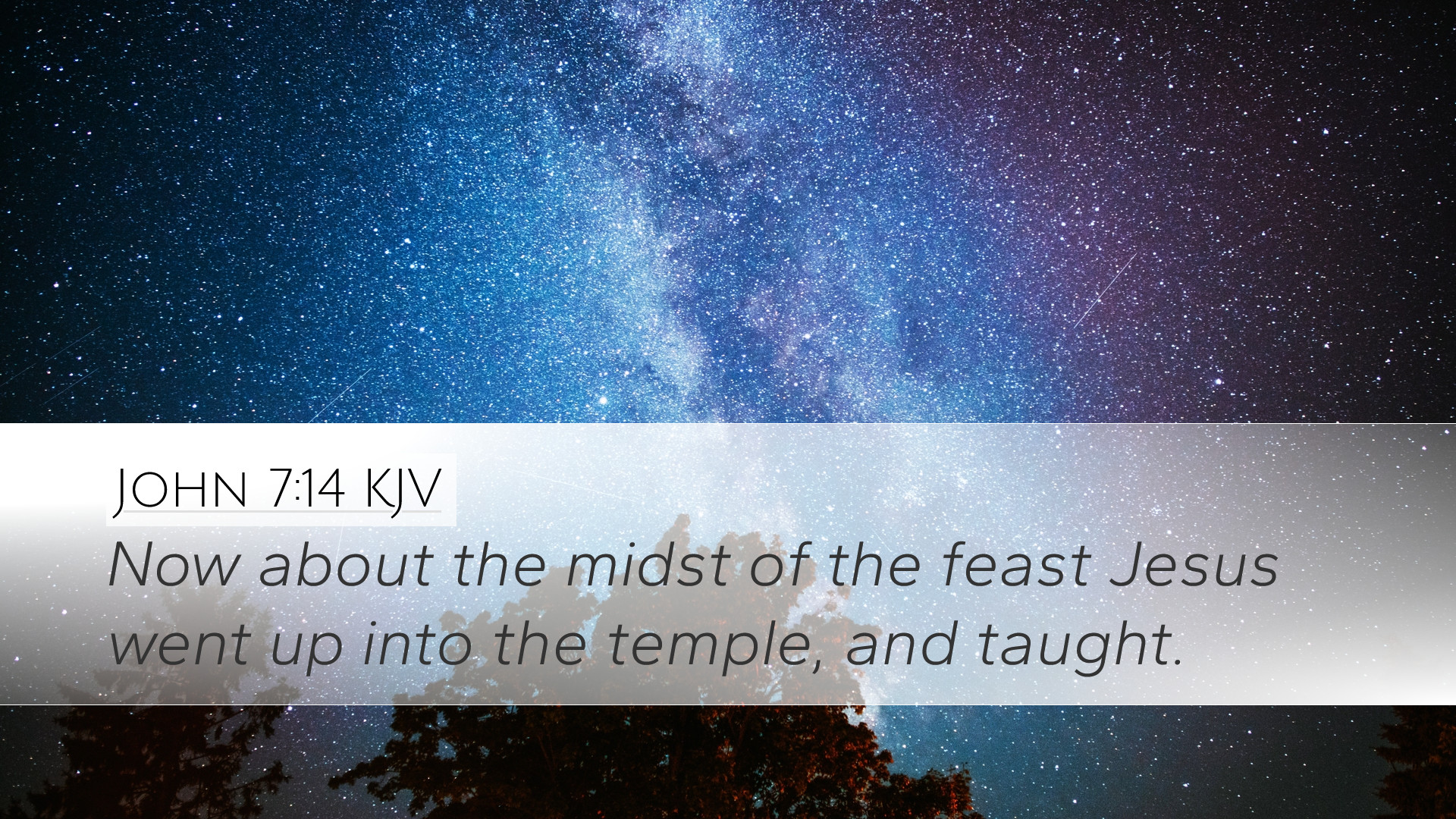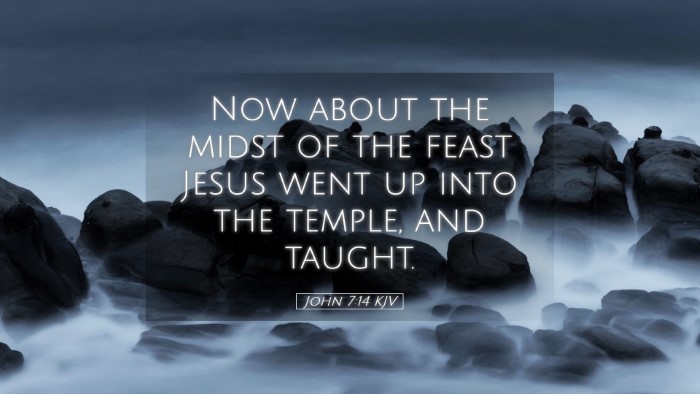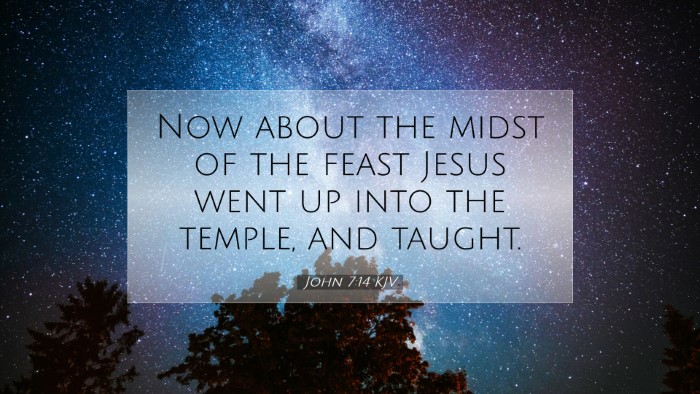Commentary on John 7:14
Verse: “Now about the midst of the feast Jesus went up into the temple, and taught.”
Introduction
The Gospel of John presents a unique perspective on the life and ministry of Jesus. John 7 showcases the tension between Jesus and the Jewish authorities. This verse marks a pivotal moment where Jesus, amidst the Feast of Tabernacles, enters the temple to teach. The significance of this action merits careful examination from various public domain commentaries.
Context and Setting
This verse occurs during the Feast of Tabernacles, one of the three major Jewish pilgrimage festivals. According to Albert Barnes, the feast was a time of great national rejoicing, commemorating the Israelites' wandering in the desert and God’s provision. Jesus deliberately chooses this moment to impact the large crowd gathered, illustrating His role as the fulfillment of law and prophecy.
Matthew Henry notes that the timing of Jesus’ appearance—midway through the feast—demonstrates that His ministry unfolds at the right moment. It serves as a reminder that God’s plan is perfect, and Jesus is not constrained by human expectations or fears of rejection.
The Act of Teaching
Jesus begins to teach, a role that signifies authority and divine endorsement. According to Adam Clarke, the act of teaching in the temple indicates that Jesus is asserting His rightful place as a rabbi, heralding insights that challenge existing norms. His teachings reflect a deeper understanding and fulfillment of the Scriptures, drawing attention to both His authority and the divine truth He embodies.
Authority in Teaching
Matthew Henry highlights the contrast between Jesus' teaching style and that of the established scribes and Pharisees. Unlike them, Jesus teaches with intrinsic authority; His message is not merely a repetition of tradition but a new revelation of God’s heart.
Symbolism and Significance
The Feast of Tabernacles also symbolizes God’s provision and presence among His people. This context implies a deeper theological significance as noted by Albert Barnes: Jesus’ teachings during the feast reflect His mission to reveal God’s presence in a more profound way than the temporary tabernacles represent.
Adam Clarke elaborates on the symbolism of the feast as it relates to Jesus. Just as the feast commemorated God’s sustaining power, so does Jesus declare Himself as the source of spiritual sustenance (John 6:35) for those who seek divine nourishment.
Reactions and Consequences
The reaction of the audience is crucial to understanding Jesus’ mission. The subsequent verses indicate the division amongst the people regarding His identity—some acknowledging Him as the prophet, while others doubt. Matthew Henry explains that the mixed responses reveal the struggle between faith and skepticism, which permeates John’s narrative.
Further, the Jewish leaders’ growing hostility towards Jesus becomes evident, setting the context for later confrontations and rejection. This antagonism is critical as it lays the groundwork for the subsequent events leading to the crucifixion, a recurring theme noted by Albert Barnes.
Application for Contemporary Readers
The events of John 7:14 resonate with modern audiences in several ways:
- Faith amid opposition: Just as Jesus faced skepticism and hostility, contemporary Christians often confront challenges in their faith journey. His example encourages believers to stand firm in their convictions.
- The authority of Christ’s teachings: In a cultural landscape often questioning the relevance of Jesus, His teachings remain transformative and authoritative. Adam Clarke emphasizes the necessity of recognizing Christ’s words as the ultimate truth.
- The importance of community in worship: The Feast of Tabernacles highlights communal worship, urging believers to pursue fellowship in faith, echoing Matthew Henry’s insights on the corporate nature of faith.
Conclusion
John 7:14 marks a significant moment in Jesus’ ministry, illustrating His role as a teacher and the challenge of accepting His message. Through the lens of public domain commentaries, we gain insights into the cultural, theological, and personal implications of Jesus’ actions during the feast. For pastors, students, and theologians, the verse serves as a reminder of the call to recognize and declare the authority of Christ in all teachings and to engage meaningfully with the complexities of faith in a diverse world.


